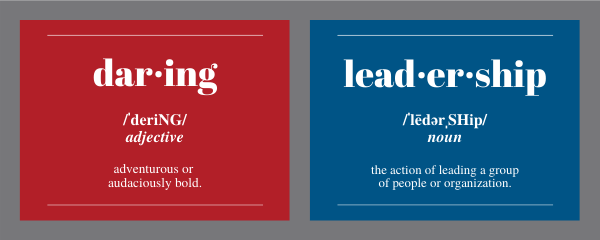COURAGEOUS CONVERSATIONS
REQUIRE STRONG COMMUNITY
Communication ensures you share your decisions with all stakeholders to socialize the decisions, changes, and resources necessary to make it all possible. This will require
daring leadership. Connecting to your US PREP support team and other coalition partners can strengthen your message and resolve.
Communication is often cited as something one cannot do enough and as the catalyst for why things go wrong. The effectiveness of communication across stakeholders either paves the way for starting the transformation process quickly or, in some cases, serves as the post-mortem rationale for a failed launch and opposition by faculty for making change.
Robert McPherson, Dean at University of Houston’s College of Education, shares his and other dean’s challenges in leading change in a teacher preparation program in the publication Daring Leadership.
Your Communication Plan
In order to build upon the significant efforts that have already been given to this work, intentional, planned communication has proven essential for scaling and sustaining a high-quality teacher preparation model. When scaling the transformed model across the educator preparation program, your faculty will want to consider what, how, and when (including how often) you communicate the change that has either occurred, is occurring, and/or will occur and should be embedded into each aspect of scaling.
The goal of this step is to create your communication plan that aligns to the method of scale you chose in step 3.
Below are questions to consider in developing your communication plan.
- How will you communicate the change as you scale the transformed model to all stakeholders (e.g. Students, Faculty, Staff, District partners, etc.)? How often?
- What mediums, either existing or new, will you use to communicate the change (internally, to cross-functional teams, and externally)?
- What are the advising implications and communications (e.g. Sophomores in year 2 need to know that ALL programs will be year-long beginning in year 3)?
- How will you request that the change be communicated/framed?
- What are the communications and framing necessary to candidates regarding how many days they will be at their placement site (in semester 1, semester 2)?
- How do you engage core staff that will support complementary processes (e.g. data collection and visualization)?
- What professional learning must take place for stakeholders to truly understand what the transformed model is to help them communicate its benefits best?
- Who is communicating to advisors and recruiters and when will this take place?
- What artifacts and/or collateral must be produced to support the communication?
Step 1
Establish Main Goals & Core Message
Step 2
Identify & Define Audiences
Step 3
Set Timeline, Modes, and Goals
Step 4
Develop Message Content
Step 5
Evaluate Impact & Update
Aspects of your communication plan should include:
- Faculty Communication
- Staff Communication
- Faculty Framing and Engagement
- Student Communication
- Professional Learning, Advisement and Recruiting
- Communication Collateral
Leverage the
US PREP
Communication Toolkit
Pause and Process
Pause and Process
At the end of each section of the US PREP Scale Toolkit we will ask a few brief questions for you to consider on your journey. Once you have completed all the Pause and Process Sections, we will send you your answers via email so you can see your results.
We encourage you to keep your results and share them with your US PREP scaling partner.





